Like most people, you probably don’t schedule gun cleaning as often as you should. However, neglecting to clean your gun or not knowing how to clean a pistol can lead to many problems, including malfunctions and decreased accuracy.
This blog post will teach you how to clean a pistol like a pro. We will go over the basics and some more advanced techniques.
With these ideas, you won’t have to worry about keeping your gun up and running whether you’re starting out or an experienced shooter.
How To Keep Stored Guns Properly Maintained
Storing your guns in an enclosed and safe space might keep their integrity for a long time. However, you might also think you don’t need to take them out regularly and clean them.
But here’s the thing:
Storing your guns without tidying them up can cause them to break down or malfunction. Moisture and dust will accumulate over time and make it a conducive environment for rust to form. Exposing your guns to water for an extended time can cause the wooden handles to warp and crack.
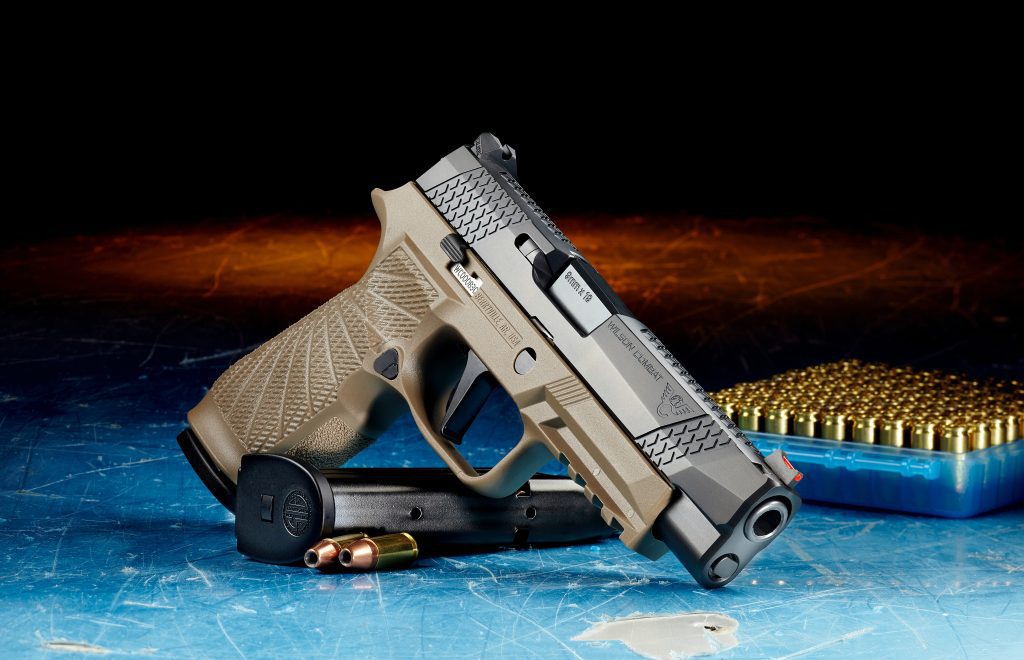
Importance of Regular Gun Cleaning
Apart from gun safety, you also have to consider regular gun cleaning.
Like any machine, you need to clean them regularly to maintain efficiency and integrity. When left unused for a long time, dust will accumulate.
Grime may also be a result of this accumulation when coupled with moisture. As experienced gun owners, we know the disaster this causes your firearm and all sorts of problems that come with it, from decreased accuracies to malfunctioning parts.
Guns will also have ‘leading’, a situation where a pistol will accumulate lead when used regularly but not cleaned afterward. Leading causes problems for your guns, such as corrosion of spring and firing pins and inefficient gun performance.
Therefore, it’s important to have your firearms cleaned regularly and prevent leading from causing internal issues.
Clean-up schedules will vary on how often you use your guns. If you’re using it for shooting practice, cleaning your machine after each session is essential. However, cleaning them at least once a month will suffice if you’re only using them now and then.
Ammunitions with potassium chlorate primers are considered corrosive, and these are cheaper types of ammunition and are often used for shooting practice. However, if not regularly maintained, corrosive ammunition can cause problems for your guns.
Things to Consider Before Cleaning Guns
As a gun owner, you need experience, practical skills, and knowledge before disassembling your firearms for clean-up.
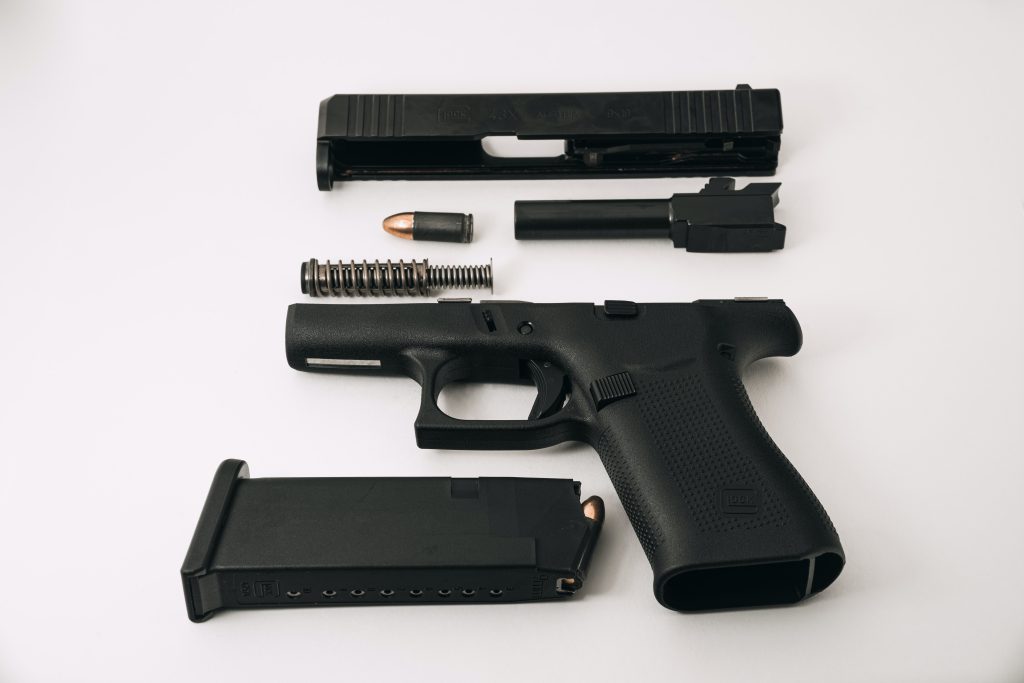
1. Understanding the different parts of your gun
Before disassembling your gun, it’s vital to learn its fundamental parts. It will make it easier for you to understand the instructions provided by the manual with the manufacturer’s instructions on how to clean safely and efficiently.
If you’re a new gun owner, we recommend you work with an experienced owner to help you walk through the basics. Search for a website or two showcasing reliable guides to help you handle your gun with precaution. Videos with step-by-step directions make it easier for you to follow through with instructions.
2. Practical skills
Practical skills are also essential to help you safely assemble your gun throughout the cleaning process. You will be familiar with the kinds of tools and other cleansing agents you’ll need appropriate for your pistol. Safety is of utmost importance when handling deadly weapons like these, so developing practical gun skills would be crucial.
If you’re new to handling a gun, we recommend taking a gun safety course, and reading your manual would greatly help you in your journey. Having an experienced gun owner will also serve as a guide to ensure safety measures are followed.
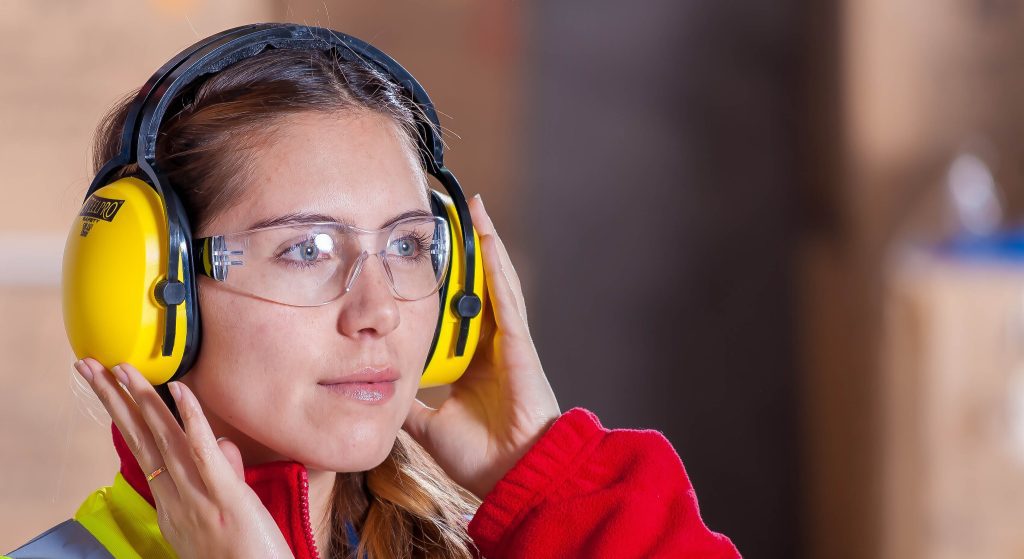
Basic Gun Safety Rules
A safe environment is crucial to prevent accidents and injuries for the owners and those surrounding them. Always keep in mind to follow gun safety protocols even when you’re tidying up your machine.
Here are some precautions to take to handle your gun when cleaning safely:
Rule 1: Always keep the gun pointed in a safe zone
Point the gun in a gun-safe zone. Never point it at anyone else when assembling, disassembling, or wiping your guns.
Rule 2: Take the bullets out until you’re ready to use it
Even when you’re working in a gun-safe zone, tidying up a loaded gun would be deadly. Make sure you have the practical skills to dislodge bullets and safely disassemble your rifle.
Rule 3: Wear safety glasses and ear protection
An ear and eye protection keep dirt-like chemicals and gunpowder from entering your nostrils and eyelids. It also prevents lead from entering your system while wiping your machine.
How To Clean A Pistol: The Steps
Now that we’ve gone over the basics, it’s time to start cleaning your firearm.
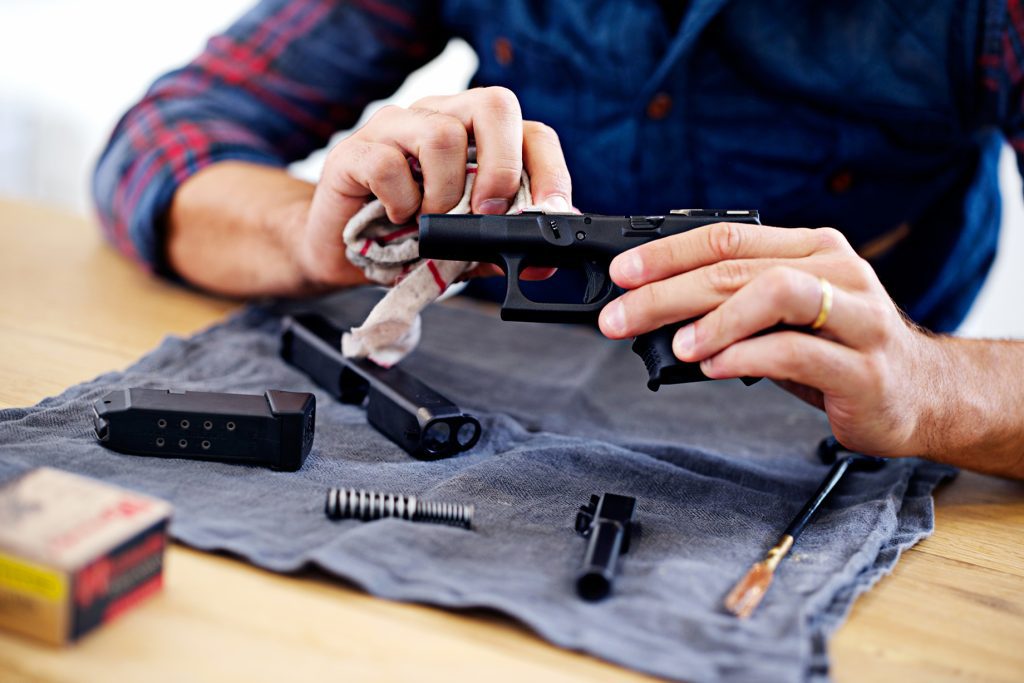
Step 1: Set the Preparation Area
An experienced gun owner would know that a dedicated space is essential to properly clean guns. Aside from safety, a takedown space will prevent harmful chemicals and debris from guns from affecting those around you.
We recommend a well-ventilated area with sufficient light in your home to prevent chemicals from circulating in the air. Garages or outdoor spaces are ideal in this case. However, if your current location doesn’t permit this, working near an open window in your home is still acceptable.
One should avoid the kitchen or living room space at all costs. Areas in your home with a lot of foot traffic could potentially endanger them. Moreover, lubricants, sealants, and other cleansing agents could contaminate the air and surrounding areas causing health hazards.
Your desk should be clutter-free to prevent accidental spills. Your priority is to create a safe space for you to work. Although it may not seem like a big deal, working on a stable and tidy table will keep all the items you need in place.
We recommend setting up a gun cleaning kit with all the necessary tools and supplies. This will make it easier for you to keep everything organized and within reach.
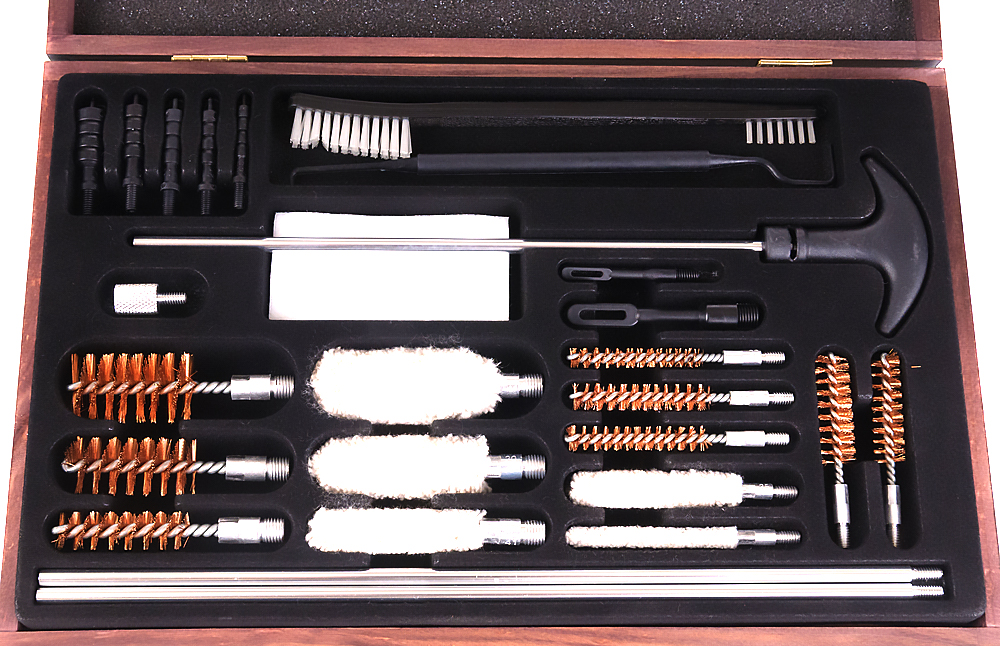
Step 2: Prepare the Products to Use
Have all your essentials first before proceeding with cleaning. You can check your local gun store or online for a gun cleansing kit. Some gun supply stores offer great deals and free ground shipping when you buy in bulk.
Here are standard cleaning supplies you’ll need to ensure your keep your gun neat, tidy, and free from all the gunk:
- Bore brush or bore snake: It should be caliber-specific. Always check with your local gun store or owner’s manual for this. Use this bore brush to clean the inside of the barrel.
- Cleaning patches: These are small cloths used to clean away debris on the gun’s surface. It’s soaked chiefly with a cleaning solvent first before wiping on the gun’s frame.
- Cleaning solvent: Guns will accumulate grime and residue over time. Use a special gun oil or solvent to wipe away the residues. Consult your manual for appropriate gun oil that will work best for your firearm.
- Lubricant: A gun lubricant acts as a protective layer after cleaning to prevent your firearm from rusting.
- Cleaning rod: It’s a tool you use with the patch to clean the inside of the barrel.
- Cleaning jags (slotted and form-fitting): These are small attachments you place with your cleaning rod to keep the patch in place as you clean through the barrel.
- Mops: These will take care of the hard-to-reach areas of your gun where grime and residue may accumulate.
- Cotton swabs: Can be used with mops to clean tight spaces.
- Double-ended/utility brushes: Functions like mops and cotton swabs. It can be used as an alternative to these cleansing tools.
- Disposable drip pan: Since you’ll be using oil, lubricants, and other cleaning solutions, having a drip pan on hand can scoop excess or dripping solutions when you’re cleaning your regular or semi-automatic pistols.
Use a rubber mat on top of your working desk to prevent accidental spills from ruining the integrity of your table. It also contains other small parts of your gun from rolling over the table.
A pistol cradle would be a great tool for tidying up longer firearms if available. It’s more convenient to work through tight areas hands-free.
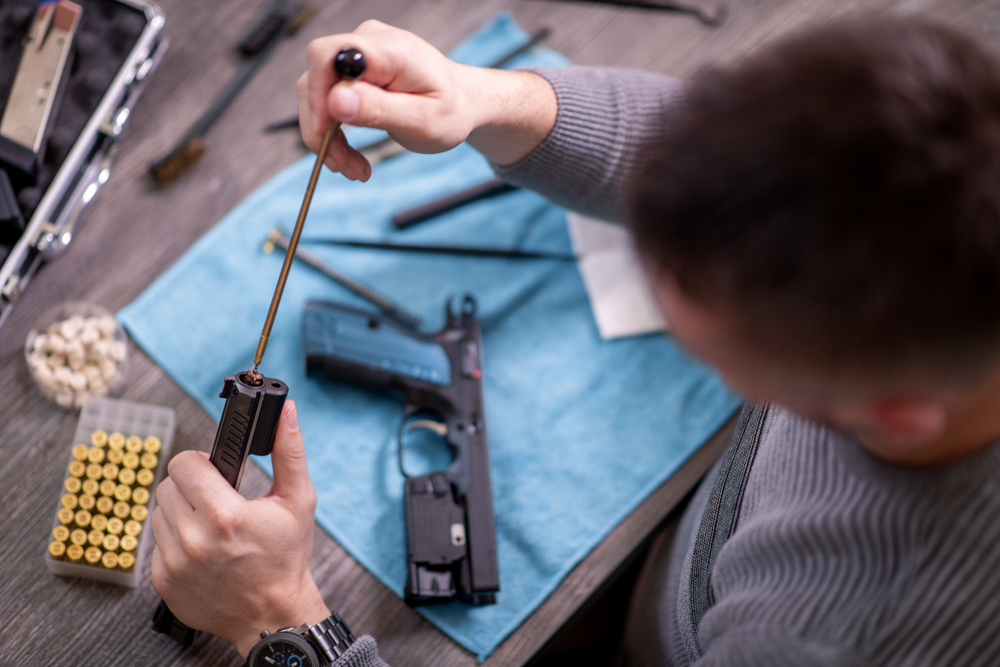
Step 3: Start Cleaning Your Gun
After you’ve understood, learned, and taken steps to develop skills on disassembling and assembling your gun, it’s time to proceed with wiping your gun.
Chamber and barrel
- Dismantle the chamber and barrel first. Start by taking down the gun’s slide and then the barrel. Check for any residues building up on the barrel.
- Using a caliber-appropriate bore brush or bore snake, start scrubbing on the debris around the barrel. Most pistols use nylon or copper-phosphate bore brushes to ensure proper cleaning. Use rotating motion when scrubbing away the hardened residues.
- Get some patches and soak them with your choice of cleaning agent. Then, set a patch at the end of the cleaning rod. Place it inside the barrel and push the patch forward until it reaches the breech.
- Let the light coating of solvent settle on the surface for about 15 minutes before brushing again.
- Repeat cleansing and scrubbing until you see a clean patch from the barrel.
- For handguns stored in their cases for an extended time, take out a few patches and immerse in a gun lubricant. Use this to wipe the barrel and chamber.
- Optional: You can use a lug, feed ramp, or barrel hood to remove debris and oil residues.
Spring and trigger
- Using a patch soaked with a cleaning solution, wipe residues building up on the trigger assembly. After, check if it’s still functioning properly.
- Dismantle the spring from the frame and check for wear and tear. Using another patch soaked with solution, take out the residue. Take a light gun lubricant to protect it from rusting. You can also use compressed air to take out tiny particles in tight areas.
Reassembling your firearm and safety measures
- After you’re done cleansing, it’s time to reassemble your gun. Pay close attention to this for security. Refer to your manual for this.
- Once done, some residues or solvents may be left on the frame. Use a reel cloth with pre-treated silicone-based lubricant to protect and give your firearm an extra shine.
- After doing this, check if safety features are still working correctly. Test-fire your gun to evaluate.
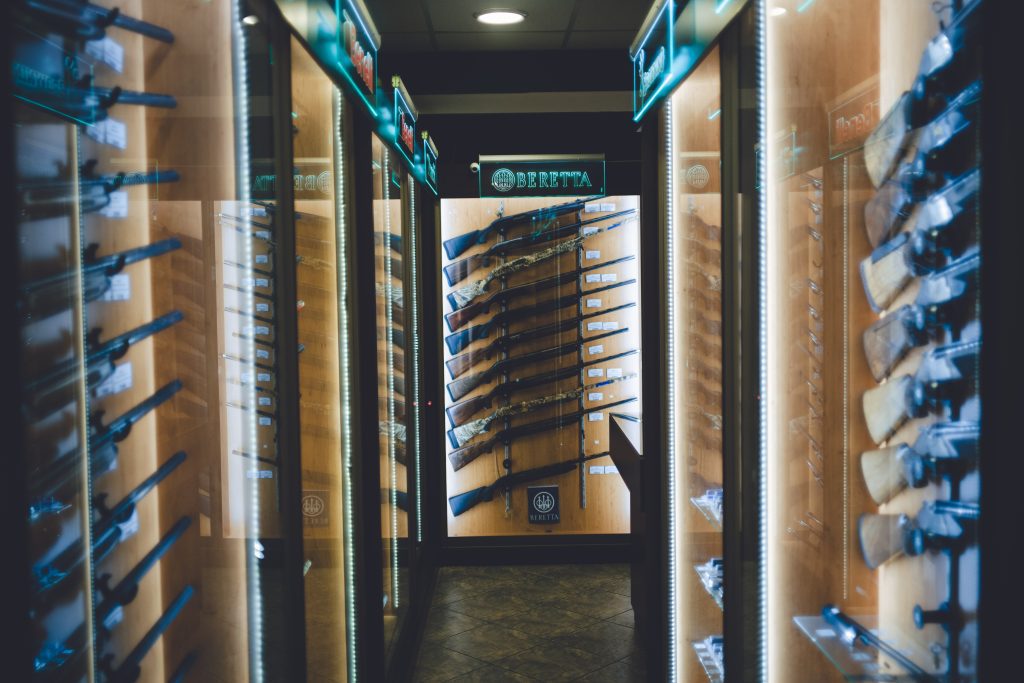
Cleaning Routines for Different Firearm Uses
We recommend you consider the usage and frequency when creating a cleaning schedule for your firearms. Here are common activities a gun owner usually engages in and how one should often clean them:
1. Hunting
Chasing a game may not require you to shoot as frequently, and you’ll only need a few shots to accomplish your goal. However, residues and leading will pile up inside your rifle or pistol.
Common knowledge among hunters to hunt game during early dusk. The morning moisture will get into your machine, along with the accumulated debris and grime from the surrounding environment. Weather conditions like snow or rain could also damage your firearm and require quick tidying up after use.
We recommend bringing a handy go-to cleaning kit for this so you can immediately wipe away water, grime, and residue from your firearm.
2. Target practice
Unlike hunting, target practice won’t expose your gun to harsh environmental factors like rain, snow, or moisture. However, your gun will be exposed to leading. If you’re shooting on the fly, carbon particles settle around the chamber and barrel, causing corrosion if not cleaned after use.
We recommend getting a quick cleaning for about 300 rounds of shooting. But if this exceeds 3000 matches, you need to set a time to do an in-depth cleaning to take out the carbon particles built-up inside the barrel. Go for cleaning agents with anti-rust elements and lubricate afterward if you’re stowing the firearm for a while.
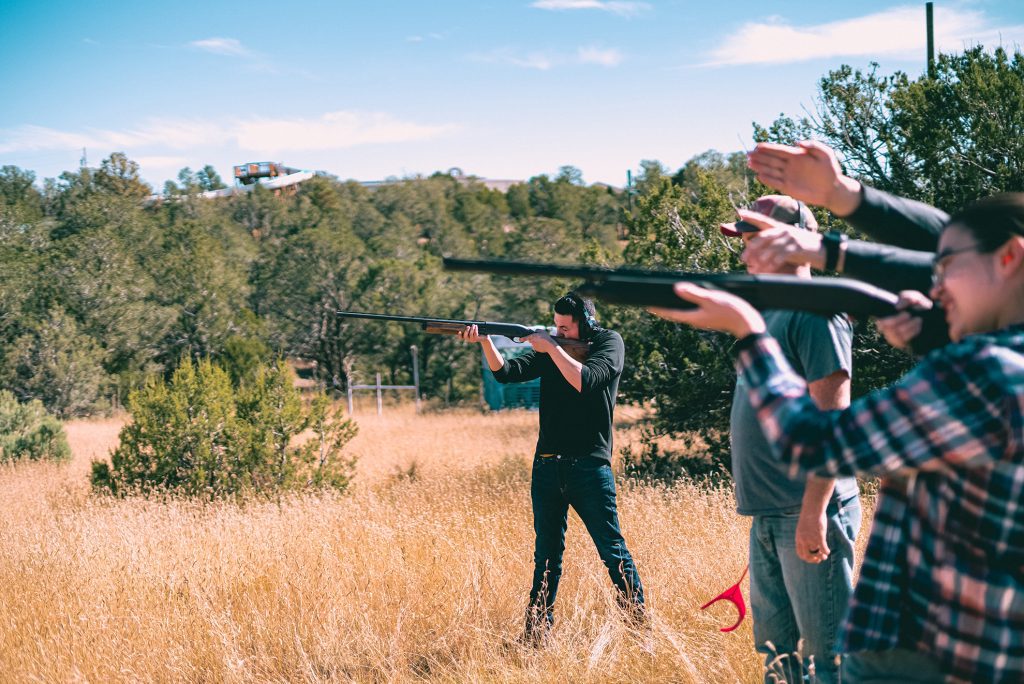
FAQS
How often should I wipe down my gun?
Wipe your gun after use. However, if you can’t do so immediately, schedule cleaning time at least once a week to prevent carbon build-up and residues in your firearm.
Can I use water to clean my gun?
You can’t use water to clean your gun. Always use caliber-appropriate bore brushes (or bore snake) and cleaning solutions to prevent damage to your gun’s integrity.
Would exposure to dirt and salt cause issues with my firearm’s integrity?
Any exposure to salt and dirt can cause your gun’s integrity issues. These are considered corrosive elements and should be wiped off immediately to prevent your firearm from being damaged.
I dropped my gun. Is it still safe to use?
If you dropped your gun, it’s still safe to use. But it’s best to evaluate its function and safety before using it again.
Do I need to remove the bullets before cleaning my gun?
You need to remove the bullets first before cleaning your pistol. A loaded gun is always considered dangerous. Dislodge the shells first and then dismantle the gun before starting your cleaning process.
Conclusion
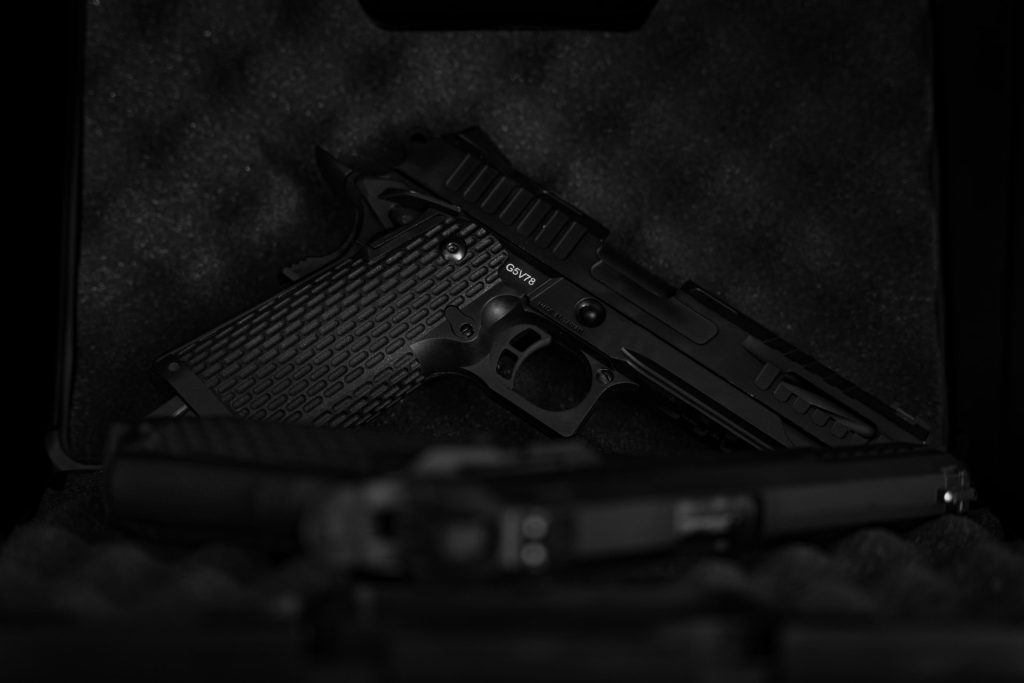
Cleaning your gun is an essential part of owning one, and it helps keep your gun in good condition and prevents accidents. With this guide, you now have a quick and easy way to gain knowledge and skills on how to clean a pistol like a pro. Always practice safety measures when handling pistols and consult your owner’s manual for proper cleaning techniques.
